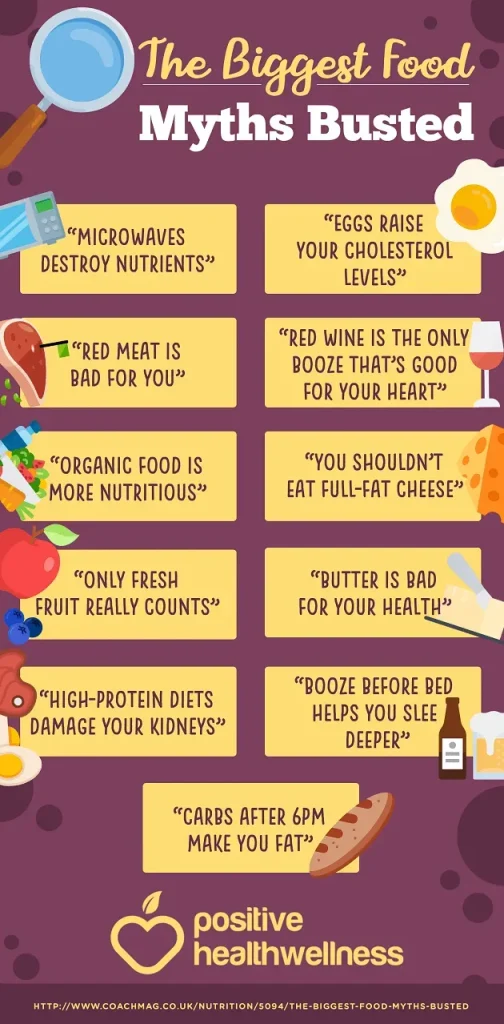Nutrition myths busted is a bold promise to separate science from sensationalism and to translate complex nutrition research into practical guidance that you can apply at the grocery store, in the kitchen, and at meal times. In a landscape crowded with quick fixes and influencer hype, this article foregrounds common myths in plain language and highlights evidence-based nutrition as the sturdy foundation for healthier choices and lasting behavior change. You’ll learn how to improve health by focusing on balanced meals, whole foods, and realistic habits, rather than following dramatic extremes or glossy shortcuts that collapse when stress or schedules change. This introduction clarifies how context, portion size, cultural preferences, and long-term goals matter more than any single nutrient, inviting readers to question sensational headlines with a skeptical, science-minded lens. By presenting practical strategies with clear, research-backed guidance, the article invites readers to adopt sustainable habits that endure beyond new trends.
To frame this topic through a broader linguistic lens, we can describe the approach as myth-busting in nutrition, evidence-based dietary thinking, and science-informed eating guidance, all aimed at reducing confusion. These alternative terms capture the same core idea using related concepts like nutrition misconceptions, evidence-informed practice, and reliable dietary heuristics that support sustainable health. By blending terminology such as evidence-based nutrition, healthy eating principles, and practical habit formation, readers gain a richer map of how to translate science into everyday meals. This LSI-inspired framing helps connect diverse user queries—from practical meal planning to debunking diet myths—without sacrificing clarity.
Frequently Asked Questions
Nutrition myths busted: what are the most common nutrition myths, and how does evidence-based nutrition help debunk diet myths?
Evidence-based nutrition recognizes nuance behind popular claims. For example, carbohydrates are not inherently harmful when they come from whole foods; fats are essential in moderate amounts, especially unsaturated fats; detox diets offer little lasting benefit; supplements cannot replace a varied diet. An evidence-based approach emphasizes whole, minimally processed foods, fiber, vegetables, fruits, lean proteins, healthy fats, and limited ultra-processed products, along with hydration and sleep, to support weight, heart, and metabolic health.
How can evidence-based nutrition help you separate healthy eating myths from facts and show you how to improve health in daily life?
To apply evidence-based nutrition in daily life, focus on sustainable patterns rather than chasing single-nutrient tricks. Build plates with plenty of vegetables, fruits, legumes, whole grains, lean proteins, and healthy fats; minimize ultra-processed foods; read labels to limit added sugars and sodium; plan meals, stay hydrated, and get adequate sleep. Tailor intake to activity level, health goals, and preferences—consider speaking with a registered dietitian for personalized guidance. The key is consistency and practicality, not perfection. This is how you turn nutrition myths into lasting healthy eating habits that actually improve health.
| Section | Key Points |
|---|---|
| Introduction | Nutrition myths busted aims to separate science from sensationalism; promotes evidence-based nutrition and practical guidance for daily health, steering readers away from diet fads toward sustainable, long-term habits. |
| Myth 1: Carbohydrates | Quality and source matter: refined carbs are less favorable than complex carbs from whole foods (whole grains, legumes, fruits, vegetables). Emphasize fiber, satiation, and steady energy; combine with protein/fats and watch portions. |
| Myth 2: Fats | Fats are essential; unsaturated fats support heart health. Focus on olive oil, nuts, seeds, avocados, and fatty fish; limit saturated/processed fats and avoid blanket fat bans. |
| Myth 3: Detoxes | Detox diets are not superior; the body’s detox systems are efficient. Support them with fiber, hydration, antioxidants, and sleep; consult professionals for health concerns. |
| Myth 4: Supplements | Supplements can fill gaps but don’t replace real food. Prioritize a varied, balanced diet; if considering supplements, consult a clinician or RD. |
| Myth 5: Small, frequent meals | Meal frequency is less important than total energy and macronutrient balance. Some people benefit from smaller meals for appetite or conditions; listen to your body. |
| Myth 6: More protein | Protein needs depend on activity, goals, and body weight. Excess protein offers limited benefit and may stress kidneys in susceptible individuals; tailor intake to your situation. |
| What actually improves health | Adopt evidence-based patterns: diverse plant-based foods, whole grains, healthy fats, lean proteins, fiber, hydration, sleep, limit ultra-processed foods, sustainable eating, and mindful sodium/sugar intake. |
| How to apply insights | Plate model with veg/fruit, lean protein, and whole grains; plan meals; read labels; start small; listen to your body; seek trusted sources like registered dietitians and peer-reviewed research. |
| Debunking myths in real life | Use sustainable weight management, avoid drastic detoxes, and choose healthy fats within a balanced plan rather than extreme diet rules. |
| Conclusion | Evidence-based nutrition, balanced meals, and sustainable habits are the reliable path to health; embrace nuance, stay patient, and aim for durable well-being rather than quick fixes. |
Summary
Nutrition myths busted shows how evidence-based nutrition, balanced meals, and sustainable habits drive lasting health. By separating science from hype and focusing on practical, research-backed strategies, readers can translate knowledge into daily actions that support long-term well-being.

